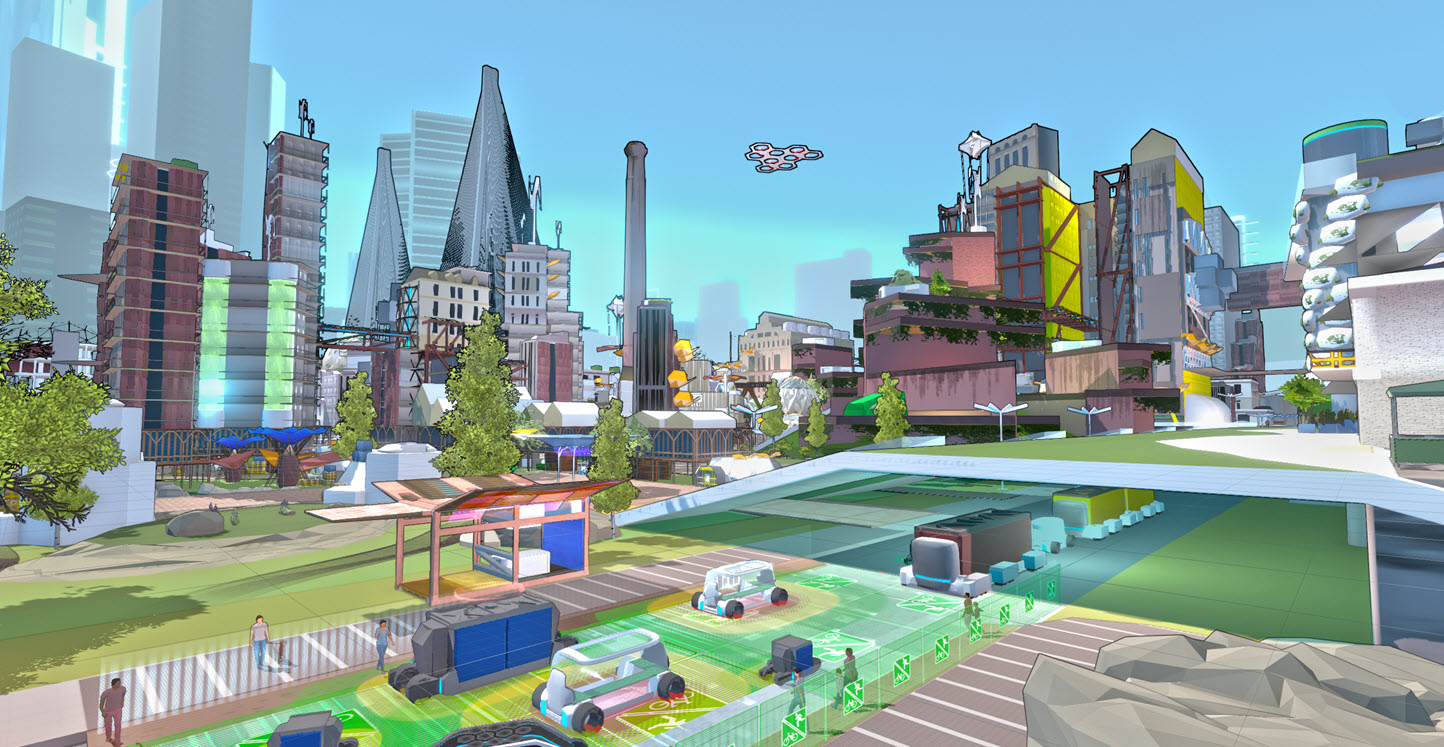
Mega City 2070 keeps growing.
After launching in February, the ASCE Future World Vision desktop app has added several new features geared toward bringing the future to life for civil engineers, students, and other “future world visionaries.”
The platform updates follow a clear path for the user: more information to discover; more ways to explore that information; and more ways to contribute your own perspective.
Mega City 2070 features hundreds of callouts highlighting the technological innovations and infrastructure developments that make the future work. Each includes detailed descriptions, discussion forums, and research links. The callouts are now searchable too, divided into 40 different topics.
“Future World Vision covers so many topics within engineering, science, and social policy,” said Patrick Meegan, lead designer for Experimental on the Future World Vision project.
“We have so much information in this application. And we want to encourage people to explore and stumble upon topics or areas of focus that they maybe wouldn’t otherwise have come across if they were looking in a non-immersive way. But now with the search functionality, I think it just allows people to further hone their exploration.”
Having discovered a surprising or fascinating innovation within the Mega City world, users can now attach images and PDFs in the discussion forums connected to each callout.
“So in the midst of a discussion, maybe now they link to an article they’ve read or even attach a paper that they’ve published themselves,” Meegan said. “Now the user is really starting to add to the information base in the application. People will build on what’s already there.”
Future World Vision and Mega City are the result of a multiyear collaboration between ASCE, global future analysts, subject-matter experts, visionary experience designers, and leading application developers.
The desktop app gives users the chance to explore Mega City 2070, a plausible city built on deep research. The immersive, 3D digital model puts you at the heart of the city, where you can experience how the future might look and feel, learn what infrastructure is essential, and study the evolution of this space over a 50-year span.
Other key updates include:
Postcards from the Future
Users, as they explore Mega City 2070, can enter camera mode to take a snapshot of any point in the world. They then can create a postcard, choosing from several graphic overlays, and download or share it with friends and colleagues.
“It’s a quick and easy way for people to find unique viewpoints and then engage with each other beyond the application itself,” Meegan said. “They’re building community, building discussions around what they’re seeing and experiencing in the app.”
New tour
Users can take a new guided tour of Mega City 2070 highlighting the various aspects of the world that focus on sustainability, resilience, and equity.
Join a group
Individual users now are able to form and join private groups within the platform. This is particularly valuable as Future World Vision becomes more prevalent in engineering curricula at universities.
“So now people can start to have smaller group discussions before engaging with the larger public discussions,” Meegan said. “In the near term especially for university groups, I think that could be a big benefit for classes.”
Learn more about Future World Vision and download Mega City 2070. The Future World Vision desktop app is free to download. The new website also features a user guide to help people get started.



